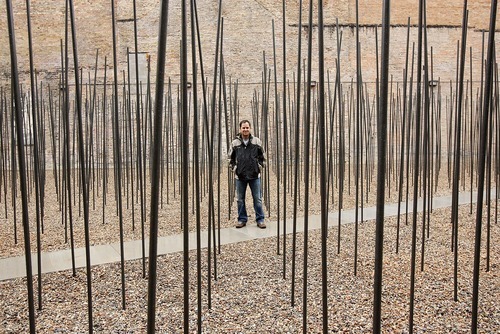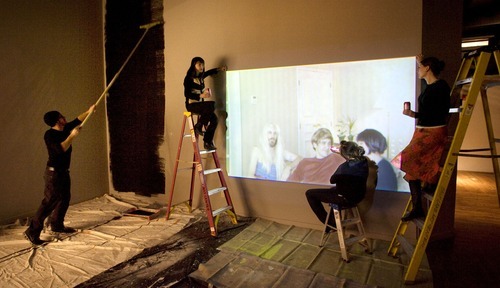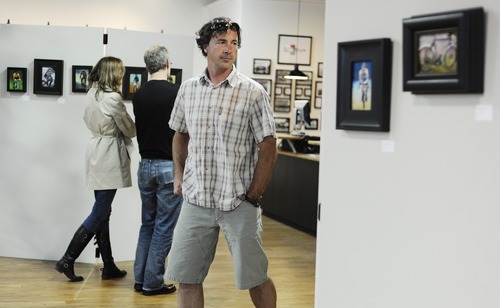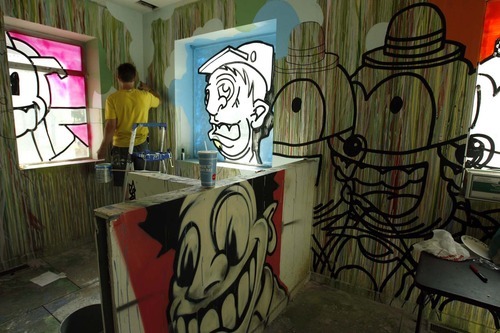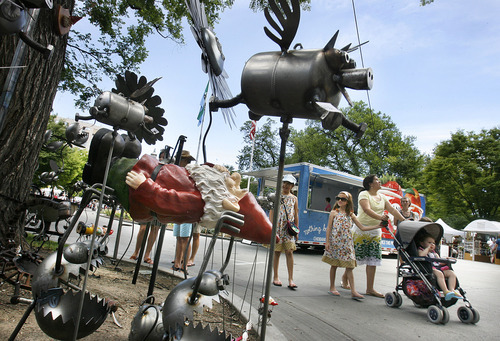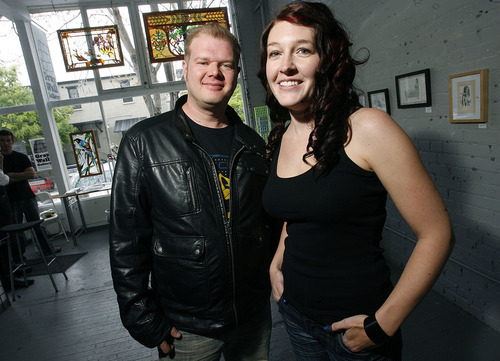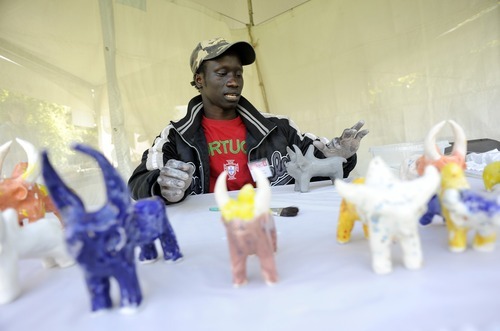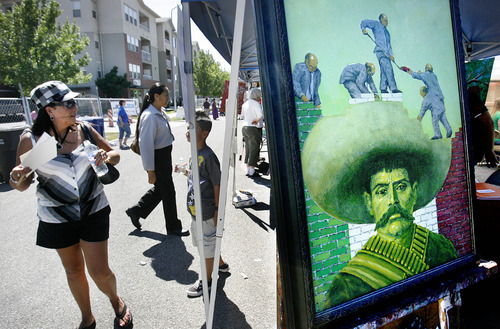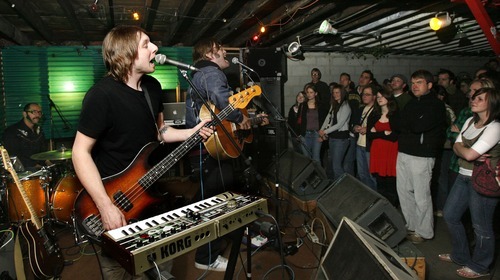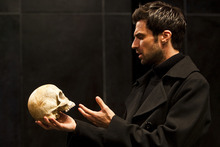This is an archived article that was published on sltrib.com in 2011, and information in the article may be outdated. It is provided only for personal research purposes and may not be reprinted.
Last year, when Salt Lake City was named the seventh most "bohemian" metro area in the United States and Canada, the typical response from locals was "huh?"
The ranking was compiled by The Creative Class Group and its founder, Richard Florida, who for the past decade has argued that there are economic advantages to cities that foster creativity. In Florida's reckoning, the term "bohemian" is not about unconventionality; it's a spicy shorthand for places that have a high concentration of visual artists, writers, musicians, entertainers and designers.
The greater Salt Lake area, according to the Creative Class Group, has 40 percent more artists and entertainers than other cities of the same size. That's based on U.S. Census and Labor Statistics data.
It's an enticing image: Salt Lake City as a mecca for artists, dancers, theater people and filmmakers. And therefore art lovers — a city as artsy as, say, Portland and Seattle.
Heck, even more artsy. Portland and Seattle didn't make the Top 10 list.
The numbers seem to point to something. But what? What kind of art are we making here? As consumers of art and entertainment, what do we embrace, what do we shy away from, what are we willing to pay for? And where, as an arts community, are we headed?
Interviews with local arts leaders reveal a city that is still a little stodgy and timid but also full of artistic energy, maybe even on the cusp of something big.
—
What we're known for • First, a few snapshots of the Salt Lake City that people expect:
We've bought more Broadway Across America — Utah "Les Misérables" tickets per capita than anywhere else ("Nobody else comes close," says Steve Boulay, president of Magic Space Entertainment). And the family-friendly Hale Centre Theatre is the biggest community theater in the country (on tap this season: yet another production of "Joseph and the Amazing Technicolor Dreamcoat"). When Pioneer Theatre Company, the state's largest professional stage, chose to produce the musical "Rent," it was slotted as an add-on to the regular season, in case subscribers would be turned off by the show's transvestite character and many swear words.
Musically, the world knows us best for our all-volunteer Mormon Tabernacle Choir, and we like making our own music. Our musical-instrument stores have higher revenues than the national average, perhaps in part because we have so many children, and thus young budding musicians. Although we're the 48th most populous metro area in the nation, we rank sixth in new piano sales.
As authors, we're most successful nationally for our young-adult fiction and nature essays, notes The King's English bookstore owner Betsy Burton. We're also known for the best-selling, saccharine novels of Richard Paul Evans.
Like the rest of America's flyover zones, we love to make crafts. We can easily produce enough local work to fill the 45,000-square-foot Quilted Bear crafts mall, where the biggest sellers include baby hair bows and magnet boards.
Audiences in the state's capital are much more sophisticated than they were when choreographer Joan Woodbury helped found the Ririe-Woodbury dance company in 1964. Still, there are limits to our edginess, Woodbury says: "Nudity never sells here."
—
On another verge? • But all that predictability is only part of our creative story.
"I came here because I think Salt Lake is at an interesting moment of growth," says Micol Hebron, who took over as senior curator of exhibitions at the Salt Lake Art Center last summer after launching her career in Los Angeles.
An artist herself, with an MFA from UCLA in "new genres art," Hebron brings a heightened multimedia vibe to the Utah art scene. She also hopes to raise the global profile of Utah's visual artists and galleries, who tend not to promote themselves outside the state.
As galleries on each coast have closed down in the recession and beyond, there are opportunities for Utah galleries to fill the void, she says. "The [Utah] art world hasn't seized on that yet."
Compared with the visual art in larger metro areas, says Meri DeCaria, director/curator of Phillips Gallery, "our art is more soulful," not as slick and commercial as the art for sale in more cosmopolitan cities. "What we have here is art we can live with."
Tourists like the fact that our paintings and sculptures tend to be more of a bargain than in other cities; but that also means that when Utah artists sell their work to more expensive out-of-state galleries they price themselves out of the local market. Utah buyers, both commercial and private, are sometimes stingy about paying for art and design, notes designer Kevin Perry, board president of the local chapter of AIGA, the professional association for design.
Sales figures bear that out: The 2009 Creative Vitality Index, compiled by the Western States Arts Foundation, shows Utah art gallery and individual artist sales to be much lower than the national average.
—
Attracting 'creatives' • On the plus side, Salt Lake City and County have invested in a growing collection of whimsical public art pieces. Art and whimsy also won out over same old-same old recently in a vacant lot that awaits the construction of the Ballet West dance center next to the Capitol Theater. Instead of using the allotted $36,000 to temporarily fence and landscape the lot, the county agreed to fund an international design/build competition.
Mastermind of the "Fluid Adagio" project was Greg Walker, the president of the state's Young Architects Forum of the American Institute of Architects. The city is at an artistic crossroads, says Walker, a moment in our history when we can choose business as usual or be willing to take more risks.
"The more the design landscape changes, the more there's momentum, and then it snowballs," Walker says. Collaboration with other local designers, across disciplines, is part of a collective, generational ethos. He adds: "There are a lot of outrageously talented designers in Salt Lake now."
Because of the Internet, it's easier now to vie for clients all over the world, so it's not so essential to be based in a major city. Utah is able to lure "creatives" looking for a lower cost of living and easy access to outdoor recreation.
"Utah is getting a reputation as a creative city," says Jason Bangerter, of the digital design studio StruckAxiom. StruckAxiom, whose clients range from Old Spice to "Shrek," the movie, has also opened offices in Portland, New York and Los Angeles.
Salt Lake City is less "ego-driven," adds design visionary Stephen Goldsmith, who 30 years ago started ArtSpace, the city's first live/work apartments for local artists.
When colleagues around the world question why Goldsmith stays, one reason he offers: "Here you don't have to raise a flag and say 'Look at me, I have ideas.' "
And it's easier, in some ways, to be the audience here. The fact that there's relatively less going on is a bonus, says Utah Arts Council performing arts coordinator Jason Bowcutt, who moved back to Salt Lake City after 12 years in Manhattan, where he co-founded the New York Innovative Theater Awards for Off-Off-Broadway work. "New York is so demanding. And you have to be wealthy to experience a lot of it."
—
We, the audience • Before Adam Sklute moved from Chicago's Joffrey Ballet to Salt Lake City to become artistic director of Ballet West, he got this typical reaction: Utah audiences will only want traditional fare.
But Sklute, who moved to town in 2007, reports that Utahns not only are as well-versed as audiences in New York and Chicago but also embrace new works.
Per capita, Ballet West draws more patrons than comparable companies in New York, San Francisco, Boston and Seattle, says company marketing director John Roake. Other marketers jokingly refer to Ballet West as the Green Bay Packers of the professional ballet world, he says.
For a state as lightly populated as Utah, it's remarkable that Vivace, Utah Symphony | Utah Opera's young professionals group, has attracted 2,600 members in five years, second in size only to the New York City Opera group, according to Crystal Young-Otterstrom, audience-development manager.
Increasingly, Salt Lake theater companies are also producing new works, including pieces written by Utah playwrights. By and large, says Plan-B Theatre producing director Jerry Rapier, the capacity of Utah audiences who want to see innovative theater is underestimated.
As audiences and consumers of the arts, we may still gravitate toward "Les Miz," landscape paintings that match our sofas and Rachmaninoff — but we're an appreciative, proud lot. We pat ourselves on the back for our local arts, and we applaud anybody who puts in the effort to act, dance and make music.
We may not truly be bohemian, but we remain enthusiastic arts consumers. When was the last time you went to a performance that didn't receive a standing ovation?
Facebook.com/tribremix —
How creative are we, anyway?
Is Salt Lake City on the verge of a creative renaissance? Are we going bohemian? We'll be considering this idea across the arts, indie music and food scenes as part of an ongoing series. Tell us what you think: Send an email message to features@sltrib.com and put "creatives" in the subject line or comment on facebook.com/tribremix.


